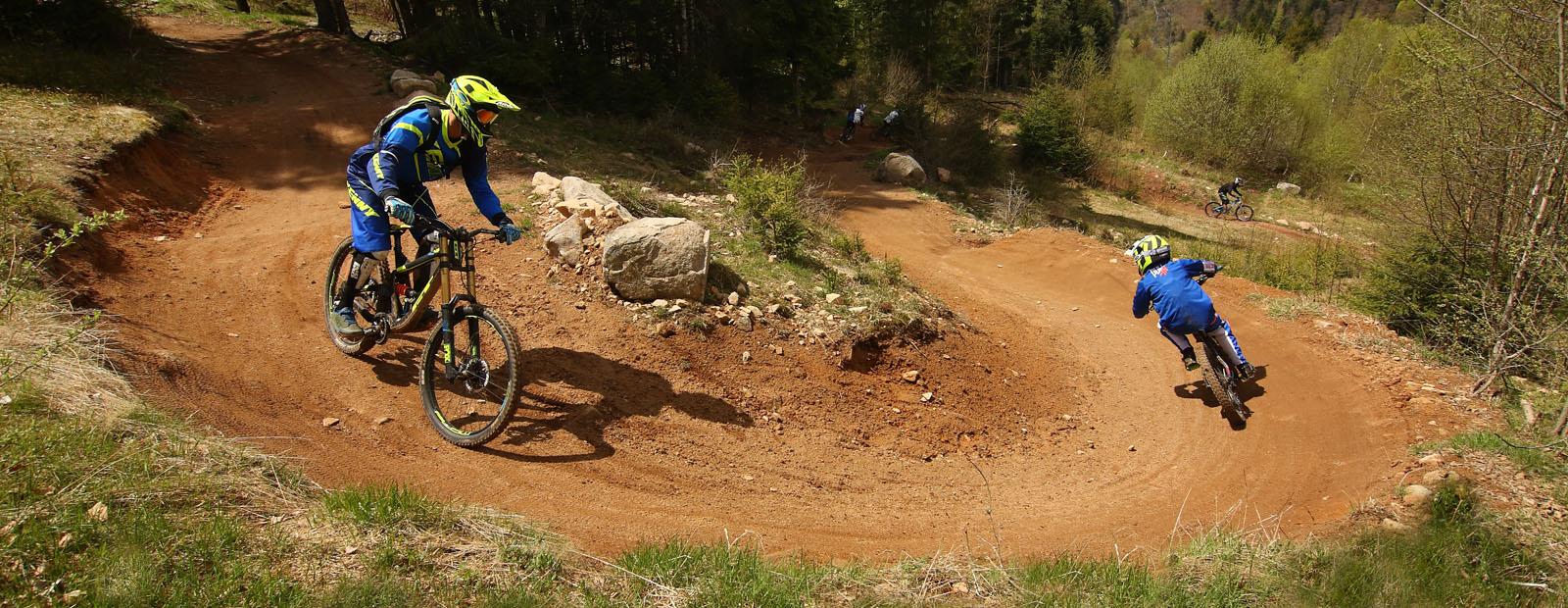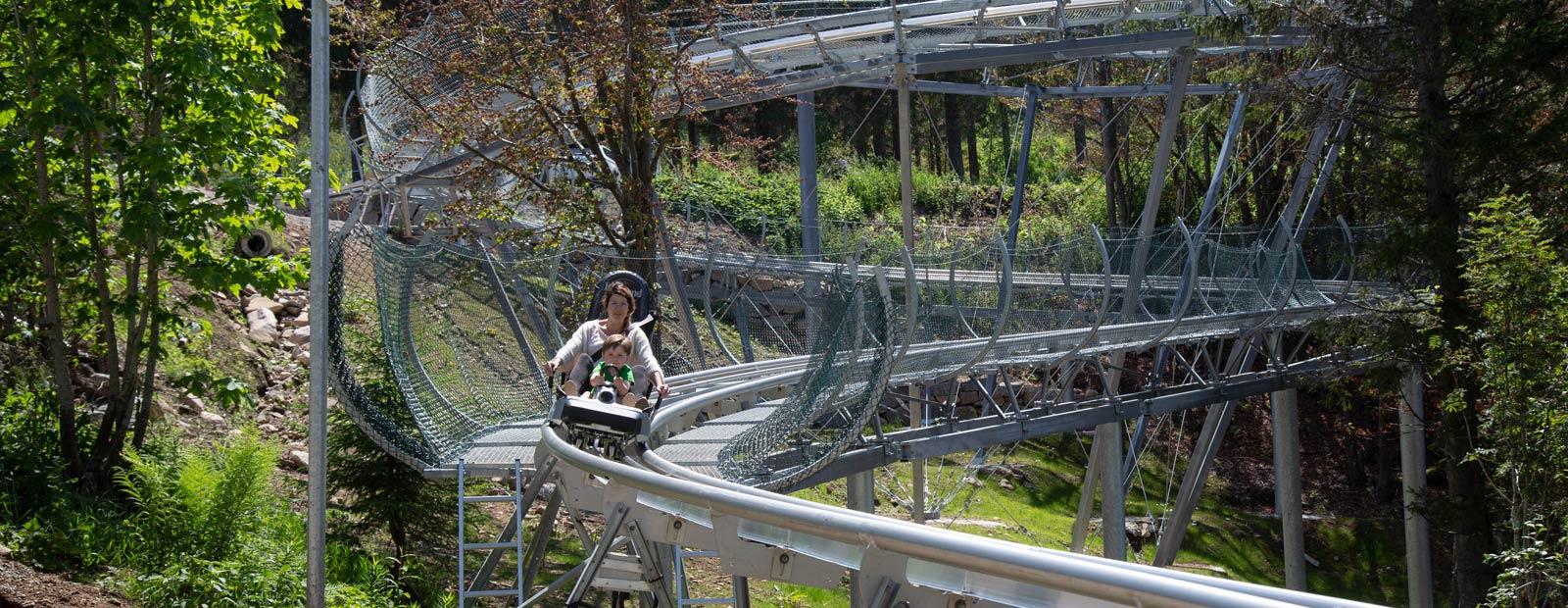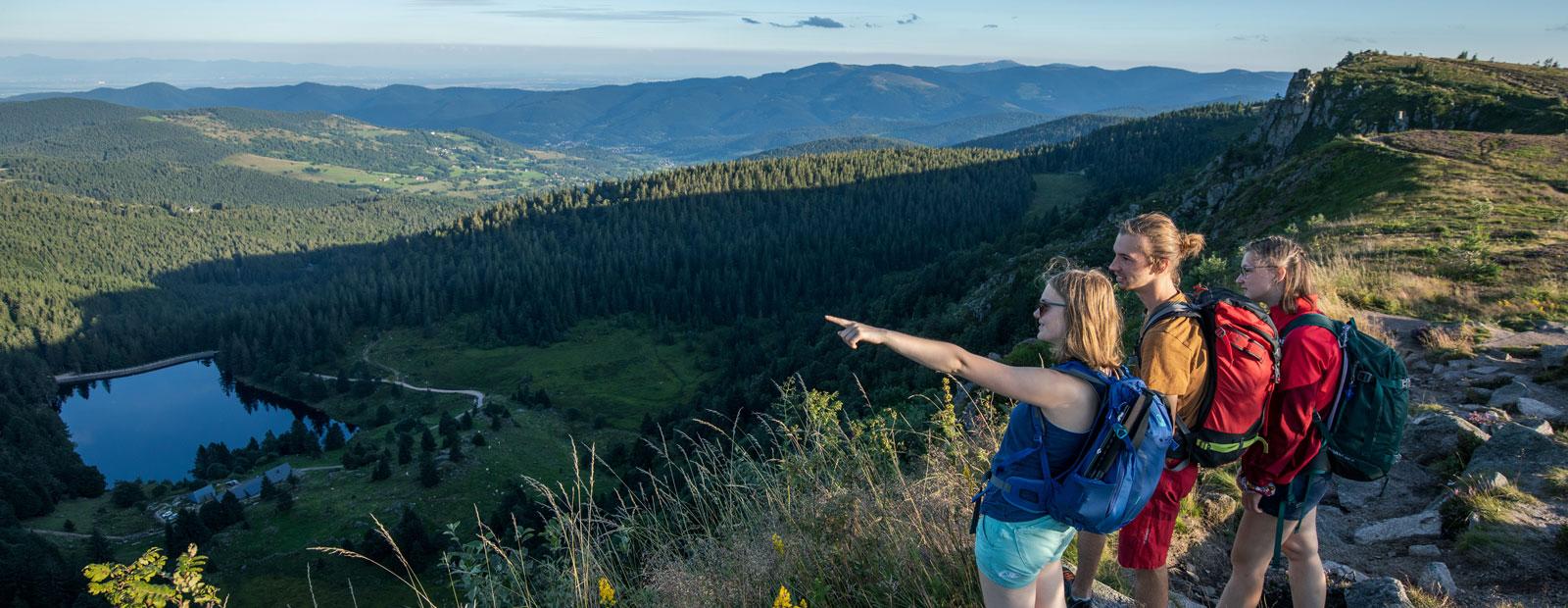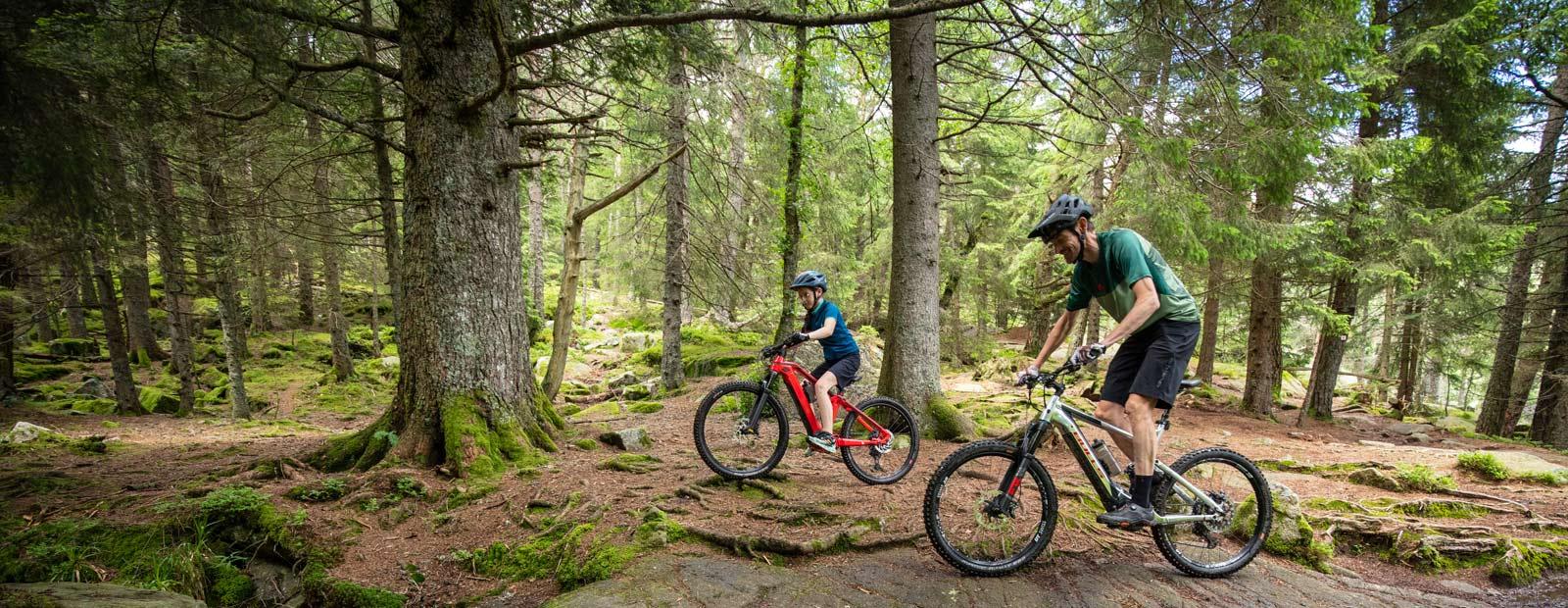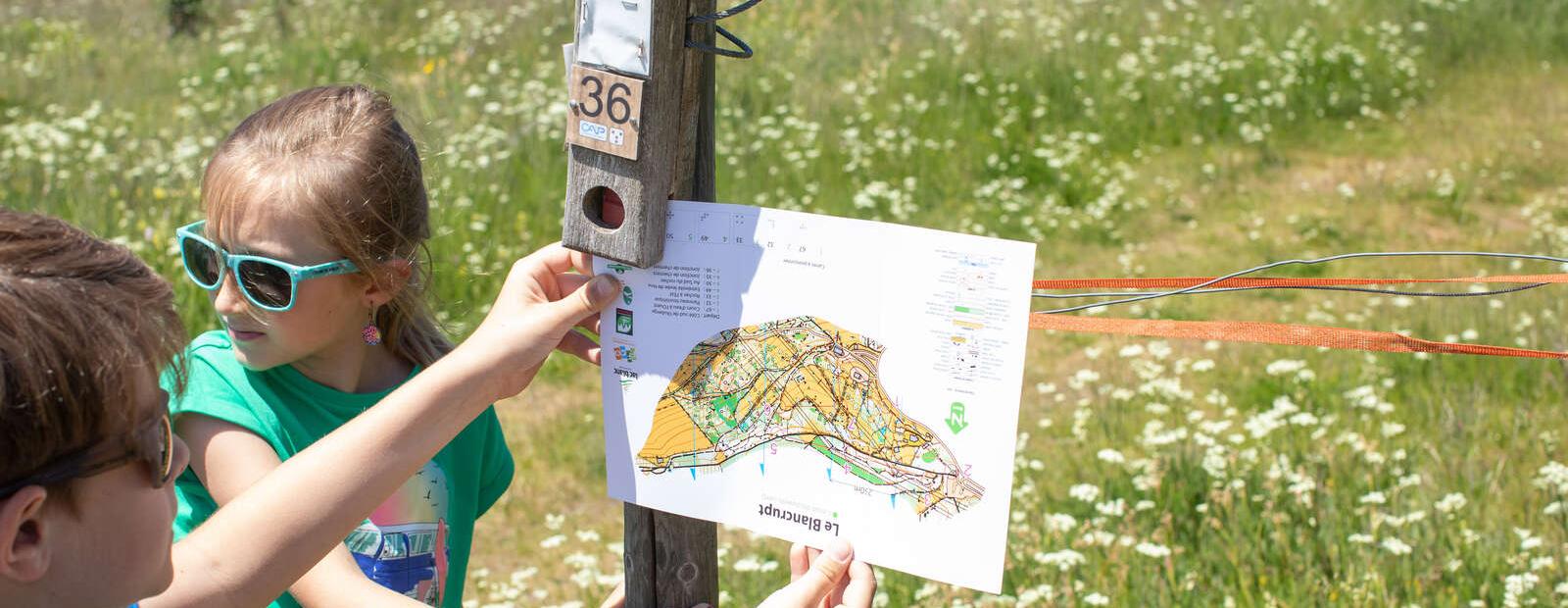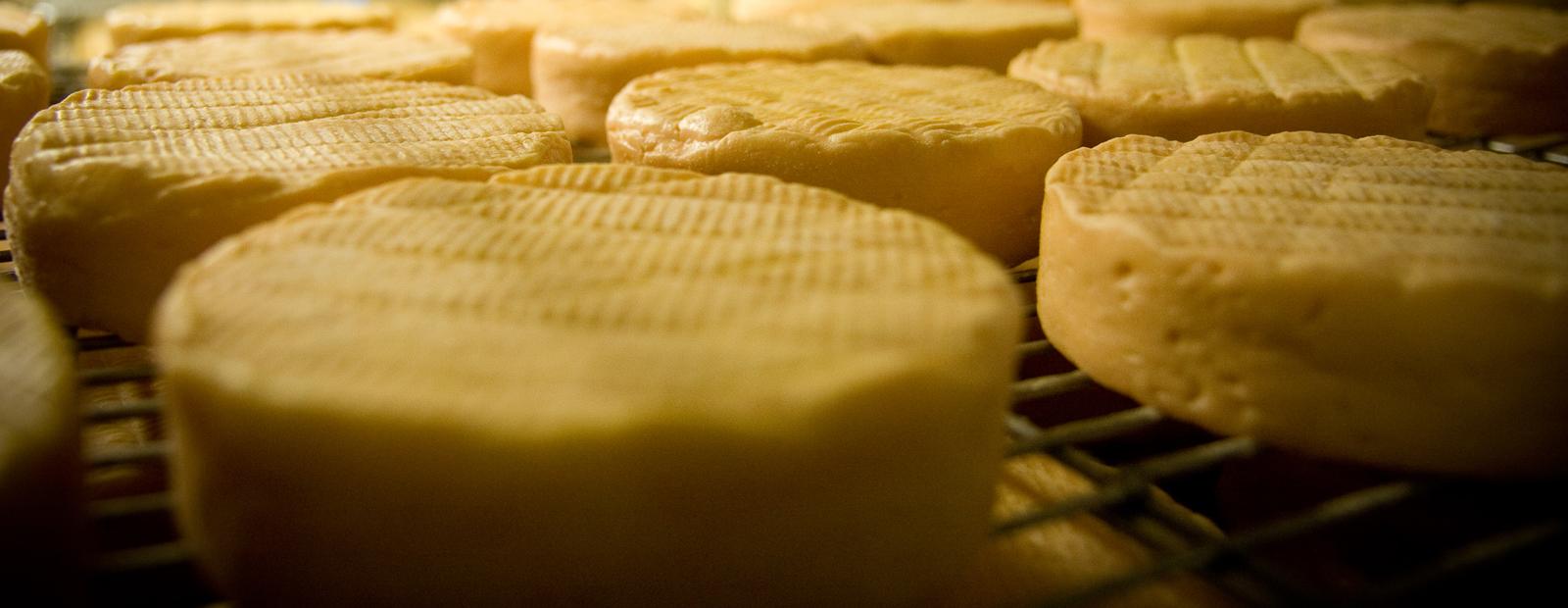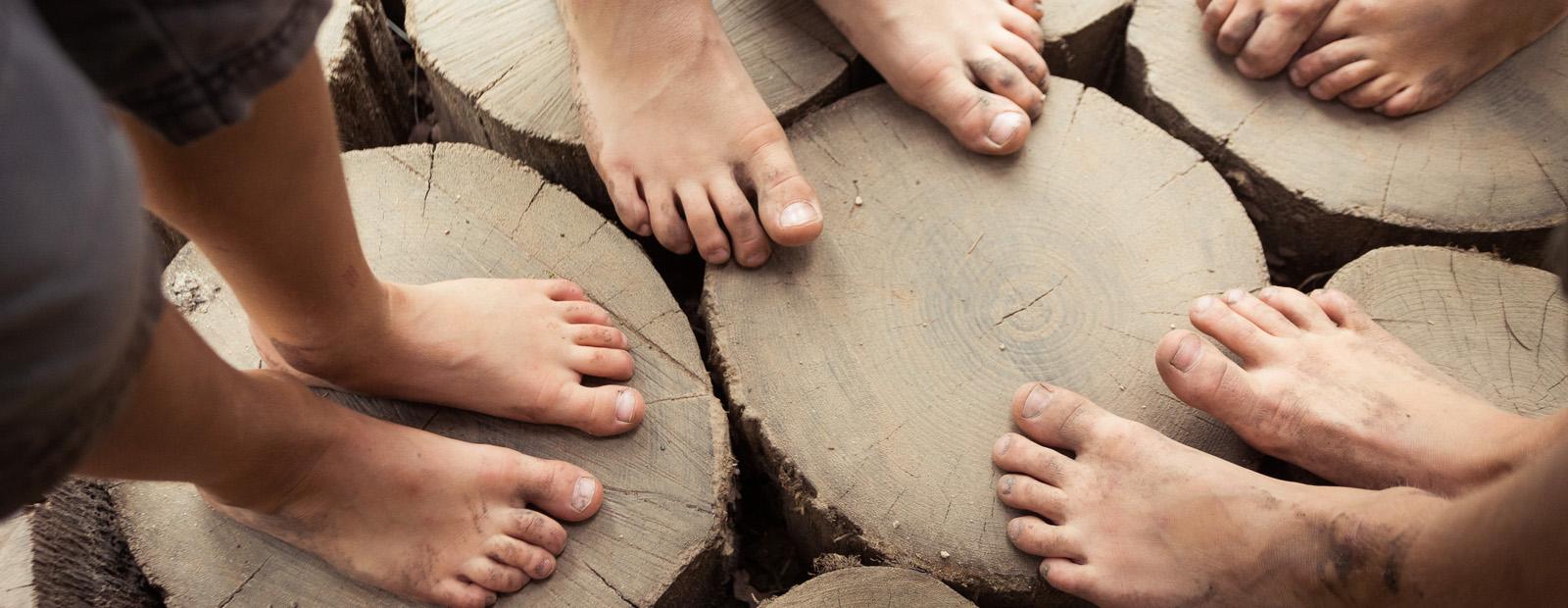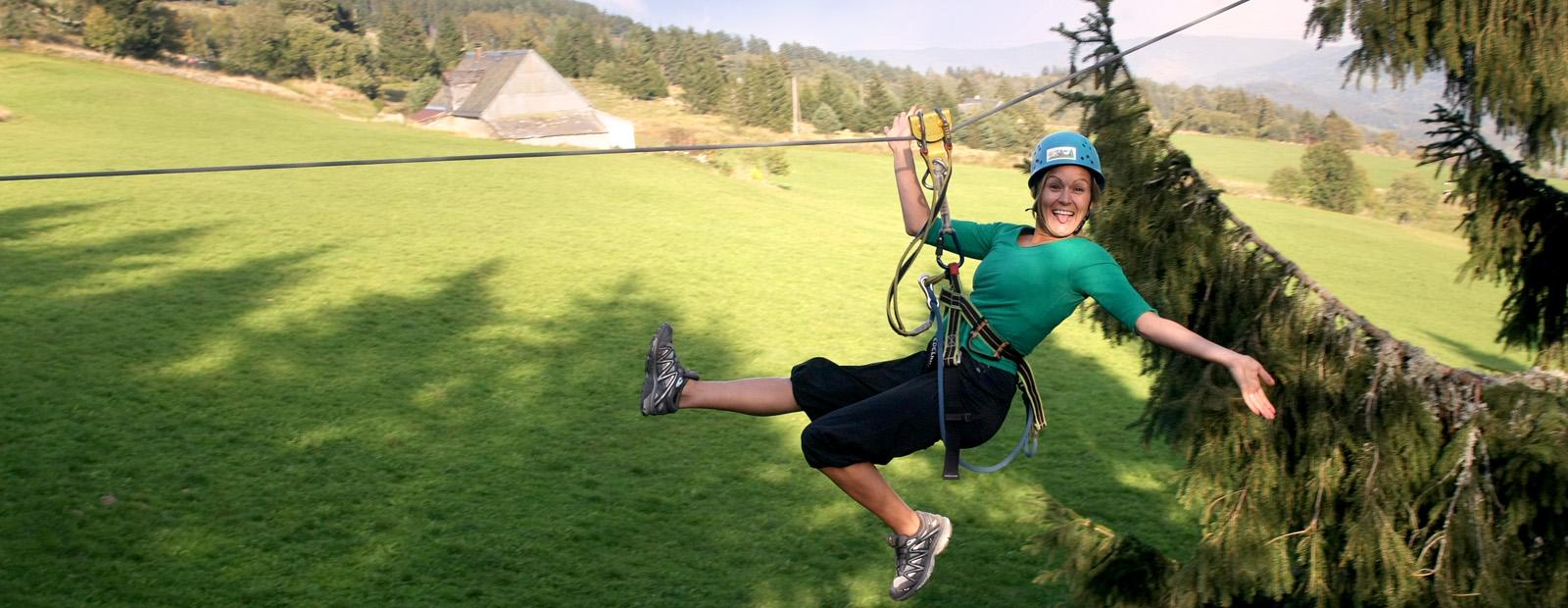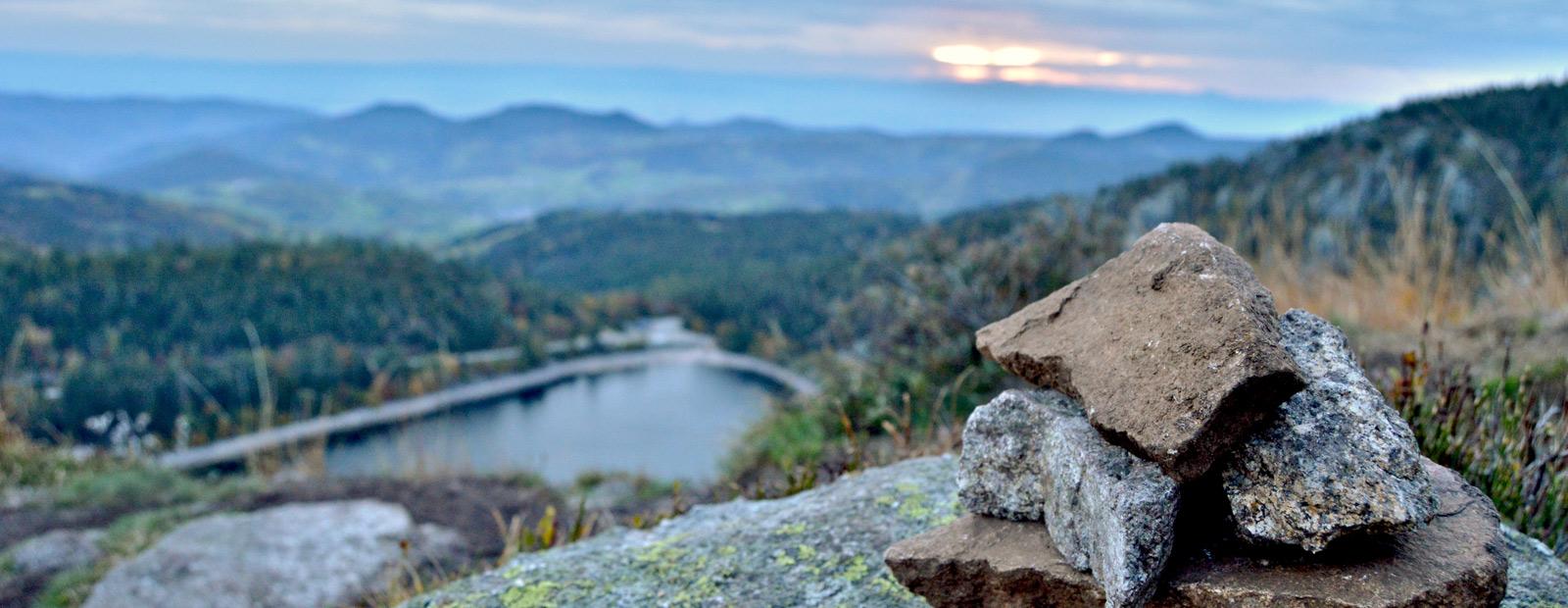I am contemplating nature
to better understand it
Are you familiar with the Lac Blanc resort and all its winter and summer activities? But do you know about the natural sites that make up the beauty and richness of the area, and the landscapes offered by this exceptional but fragile natural environment?
Would you like to know more about the lakes and nature reserves? Follow us, we'll take you there!
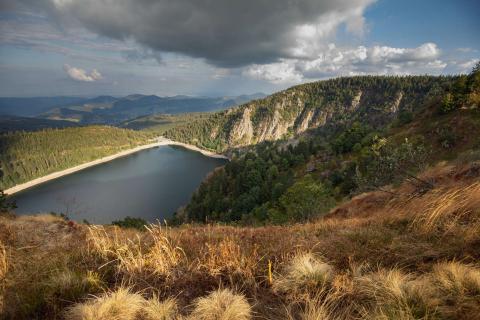
The Lac Blanc
Iconic, of course! It's the lake that gives our resort its name.
A few technical details: formed in the heart of an ancient glacial cirque in the Vosges mountains, it lies at an altitude of 1,055 metres. It covers 29 hectares and is up to 72 metres deep. It is linked to its little brother, the Lac Noir, 100 metres below.
Its waters are closed to boating and swimming due to the turbulent currents and hydroelectric installations. Fishing is permitted, however.
Lac Blanc takes its name from the colour of its waters, given by the crystalline sand that covers its bottom. Nestling in a heart of granite, on whose slopes the chamois like to venture, it is surrounded by a dense forest of fir trees and overlooked by the ridge line covered by thatch.
Numerous hiking trails allow you to admire it from every angle! From the Col du Calvaire or from the Digue car park, there are a number of possibilities: take a look at all our routes, some of which follow the GR5, and make your choice!
How can you talk about Lac Blanc without mentioning the Hans rock? Reaching an altitude of 1,144 metres, it dominates Lac Blanc and has been crowned by a protective Virgin since 1977.
The Hans rock is particularly popular with climbing aficionados: its routes are reserved for experienced climbers or those accompanied by a professional guide.
Along with the Lac Noir, the Lac Blanc is part of the Deux Lacs nature reserve, which is home to many remarkable species that are rare in the Vosges mountains.
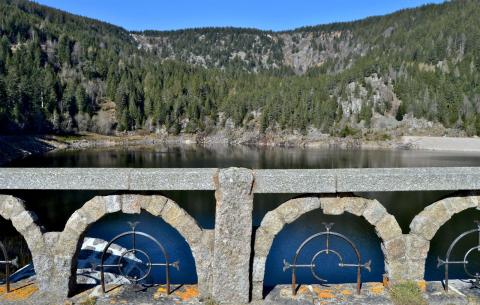
The Lac Noir
Linked by a stream to its "big brother" the Lac Blanc, the Lac Noir is also formed in a glacial cirque, beneath the crest of the eastern slope of the Vosges massif at an altitude of 935 metres.
It is also linked to the Lac Blanc via pipes installed to supply a hydroelectric power station, now destroyed, which stood on its north bank.
Swimming and boating are also prohibited for safety reasons.
With a surface area of 14 hectares, it also takes its name from the colour of its waters: the black given by the reflections of the peat that covers a large part of the bottom of the lake.
The lake's outlet, the Noir Rupt, flows through a narrow gorge in the natural dam, giving its name to the hamlet of Noirupt below the Lac Noir.
A hiking trail, easily accessible and signposted by the Club Vosgien, takes you around the Lac Noir in around 45 minutes, via a rocky passage and a bridge over a stream feeding the lake: you can download the trail for free from our website! A longer version of the tour of the Lac Noir also takes 1 hour 45 minutes.
Along with the Lac Blanc, the Lac Noir is at the heart of the Deux Lacs nature reserve.
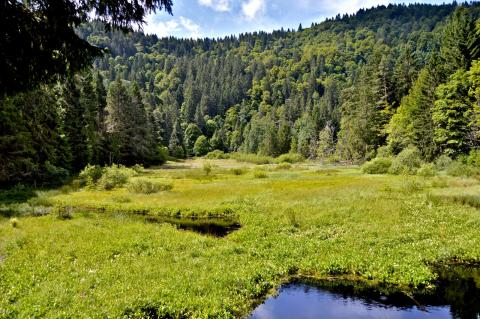
L'étang du Devin (the Devin Pond)
The pond nestles in a glacial cirque exposed to northerly winds. It forms a natural funnel covering an area of 2 hectares, with a 30-metre-wide opening in the mountain.
The Etang du Devin is in fact a peat bog at the end of its evolution. During the last glaciation of the Vosges massif, a glacier hollowed out this depression, the glacial trough. The lake thus formed was colonised by vegetation typical of wetlands: sphagnum moss, cranberries, drosera, cottongrass, etc. Gradually, as they slowly decomposed, a peat bog formed, at a rate of a few centimetres per century. This peat bog has been called Etang du Devin since at least 1441.
Initially drained for grazing, it was later exploited for its peat and has been a protected area since 1965. It is home to a unique, rare and fragile flora of Nordic relict plants.
The Étang du Devin, like all the peat bogs in the Vosges, is an extremely delicate environment that must be protected. Picking plants is prohibited, as are fires, as the flames can smoulder for a very long time under the peat bog. Stay on the signposted paths to enjoy the scenery and discover this exceptional environment: download the free route description to reach the Etang du Devin from Lapoutroie.
